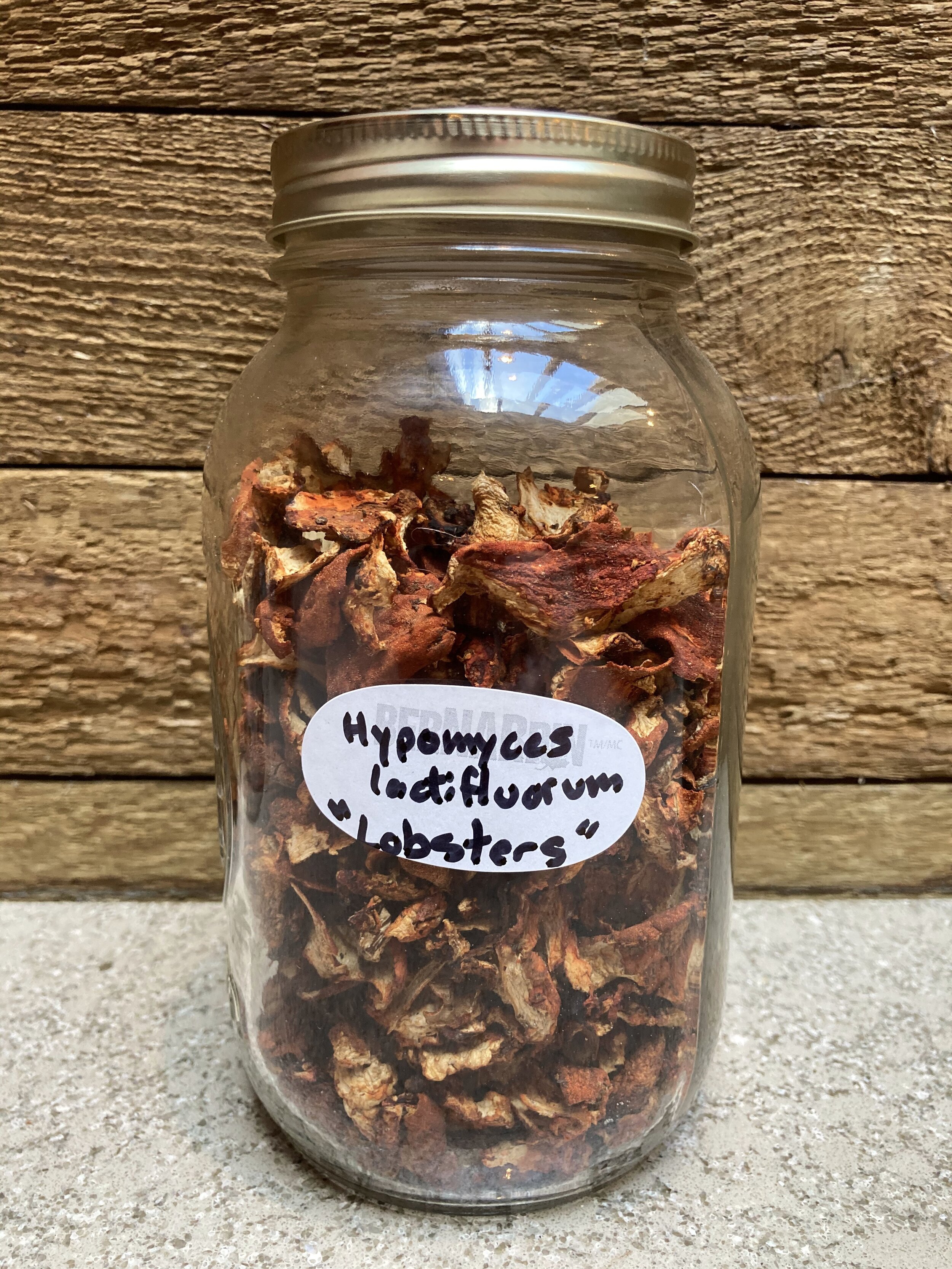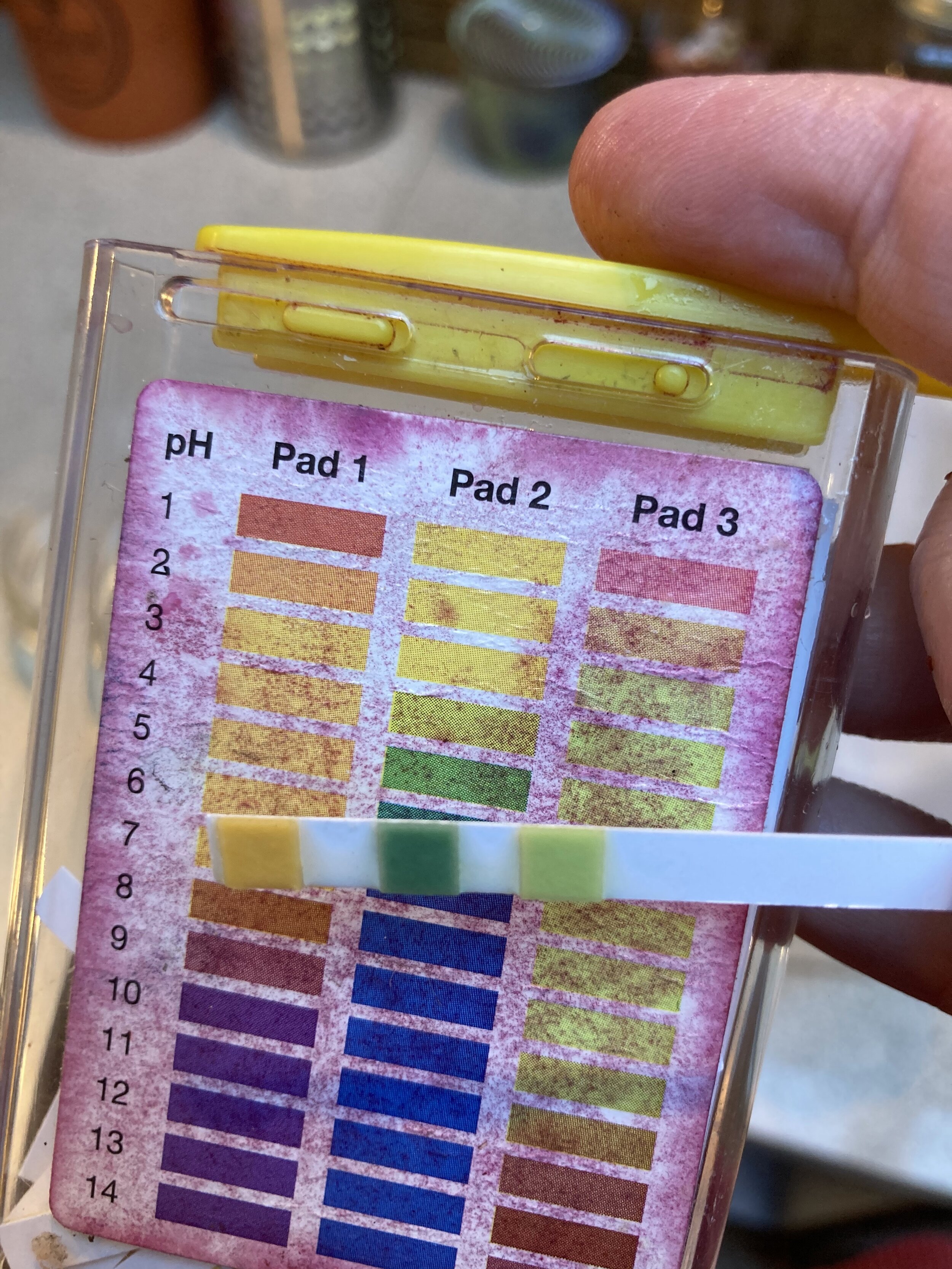Hypomyces lactifluorum, aka Lobster Mushroom
Oddly enough, this isn’t actually a mushroom. It’s a fungus called Hypomyces lactifluorum which grows as a parasite on the outside surface of other mushrooms - usually Russula brevipes in my region. It is a celebrated local delicacy in the fall though I haven’t dared yet.
Fresh and dirty.
Forage on Gambier Island
In mid-October, we took our little family on a sail over to Gambier Island and did a little foraging. The chanterelles and lobster mushrooms were out in full force.
Aside: Foraging tip
As lobsters age and begin to decompose, the change in pH shifts the colour of the mushrooms from deep orange to pinks and purples. Though these would not be edible, they dye just as well (if not better). So when hunting for lobsters for dyeing, cast a wider net, though be prepared for unpleasant textiles and smells.
A little trim
I also augmented my foraging from the farmer markets and friends (thanks Vic!). Once we had several pounds worth, incredible artist and friend Rita Kompst and I proceeded to shave off the outer layer of deep orange Hypomyces.
Mushroom witchery
Once shaved, the skins were run through the dehydrator for about 10 hours and stored in jars.
1:1 dyestuff to wool
I went for a 1:1 ratio of skinned dried lobster to fiber. I weighted out 20 grams in two skeins and measured 21 grams out of the lobster (105% Weight of Fiber). These were then poured into a jar with several cups of tap water.
Heat the dyestuff
The jar was then placed into a pot of water on the stove and heated at a simmer for an hour. While being heated, two 10 gram wool skeins wool (premordanted with alum at 16% WOF) were soaked in room temperature tap water for 1 hour.
Into the sack
Once heated, 10 skeins of wool premordanted with alum was added into a 1 gallon mesh paint bag (this method was developed by Alissa Allen in Washington state). The bag allows the fiber to move in the jar relatively freely but keeps the fiber separated from the dyestuff (which makes a huge difference to not getting gunk bound up in the fiber). The fiber was left to simmer for an hour, with occasional poking and flipping.
Smells like mushroom soup
I chose two skeins for this dye session because I wanted to see the colour shifting you can do with lobster mushroom. I poured half the dye vat into a second jar and separated one skein into a new mesh bag and added it in. This gave me two separate jars to alter the pH with. The plan was to shift one pH down (acidic) with vinegar and the other one to bring the pH up with washing soda.
pH 6 with Vinegar
I added vinegar to one jar by the tablespoon (two in total) until the pH hit about 6. The vat colour was a bright orange. The wool was kept at this pH for about 10 minutes before being removed and washed.
pH 6
A bright orange was achieved with 2 tablespoons of vinegar.
pH 11
The strong base in the form of washing soda was added by the 1/2 tsp until the pH rose to 11. The vat turned a deep purple. The skein was only kept for about 5 minutes at this high pH as I didn’t want to damage the wool by keeping it in too long.
pH 11
After only about 5 minutes at a pH of 11, the wool turned a deep medium purple.
Done
Amazing the colour shifts when you play around with pH.















